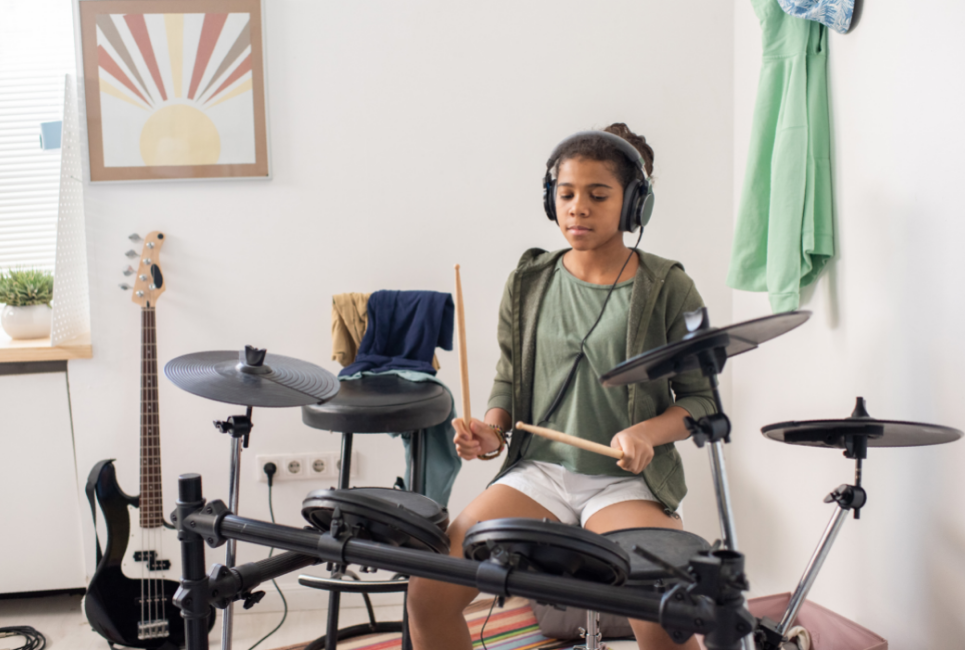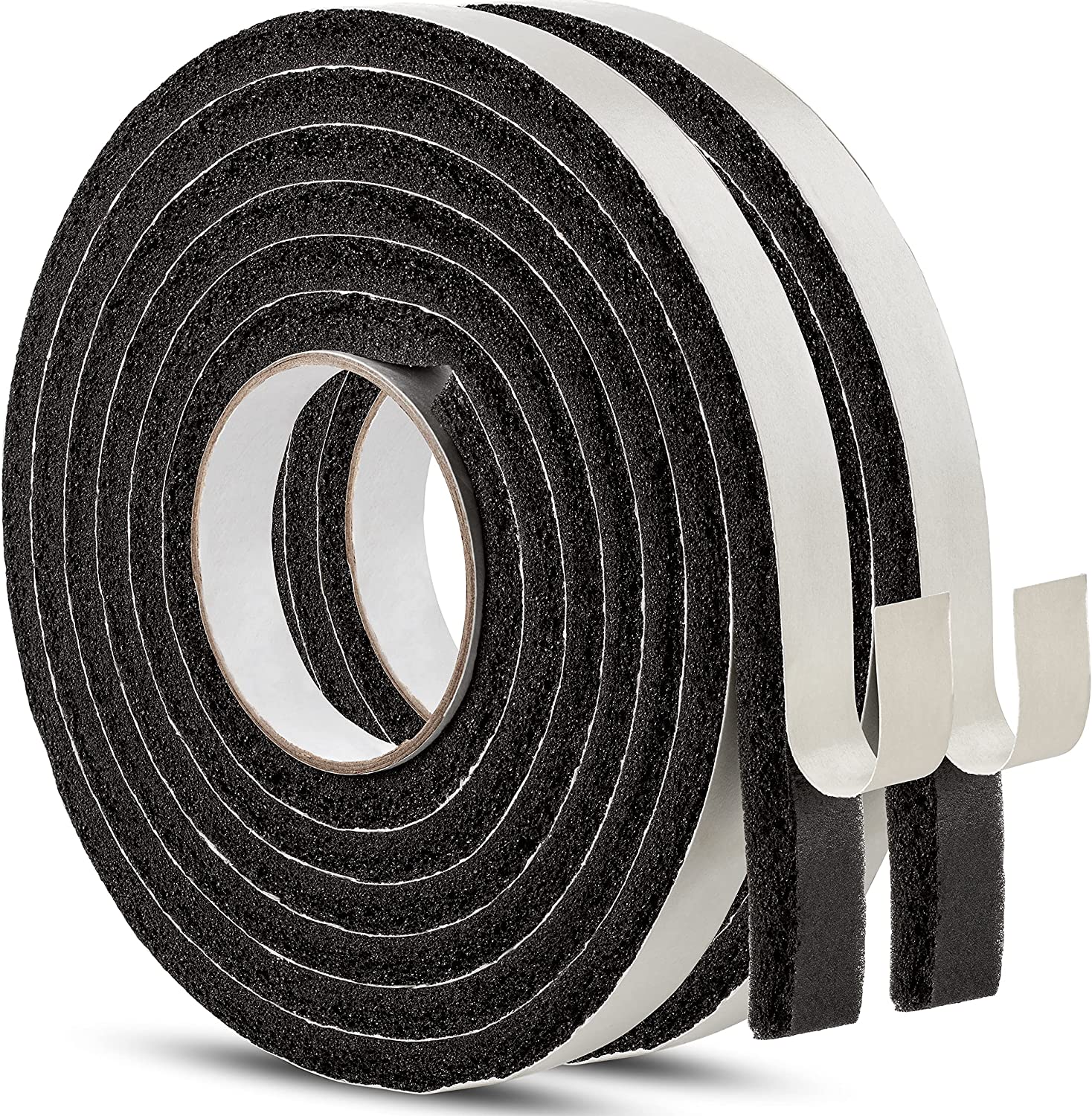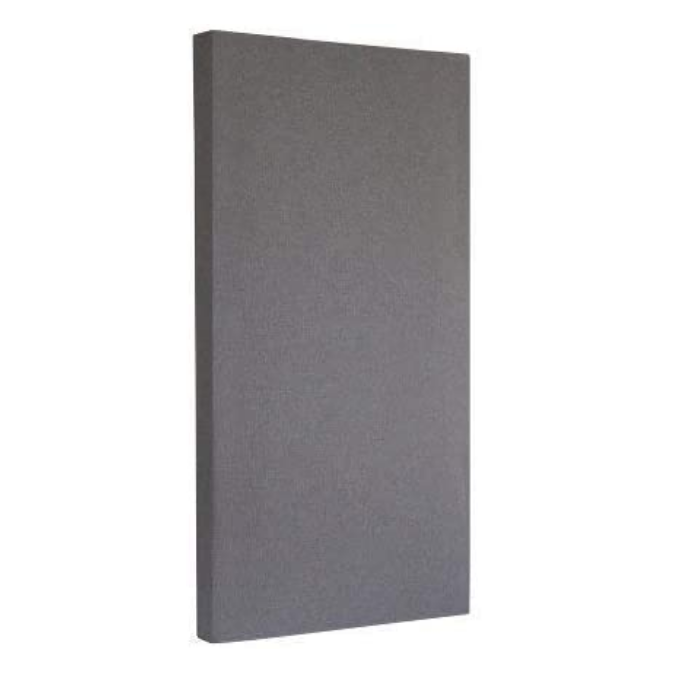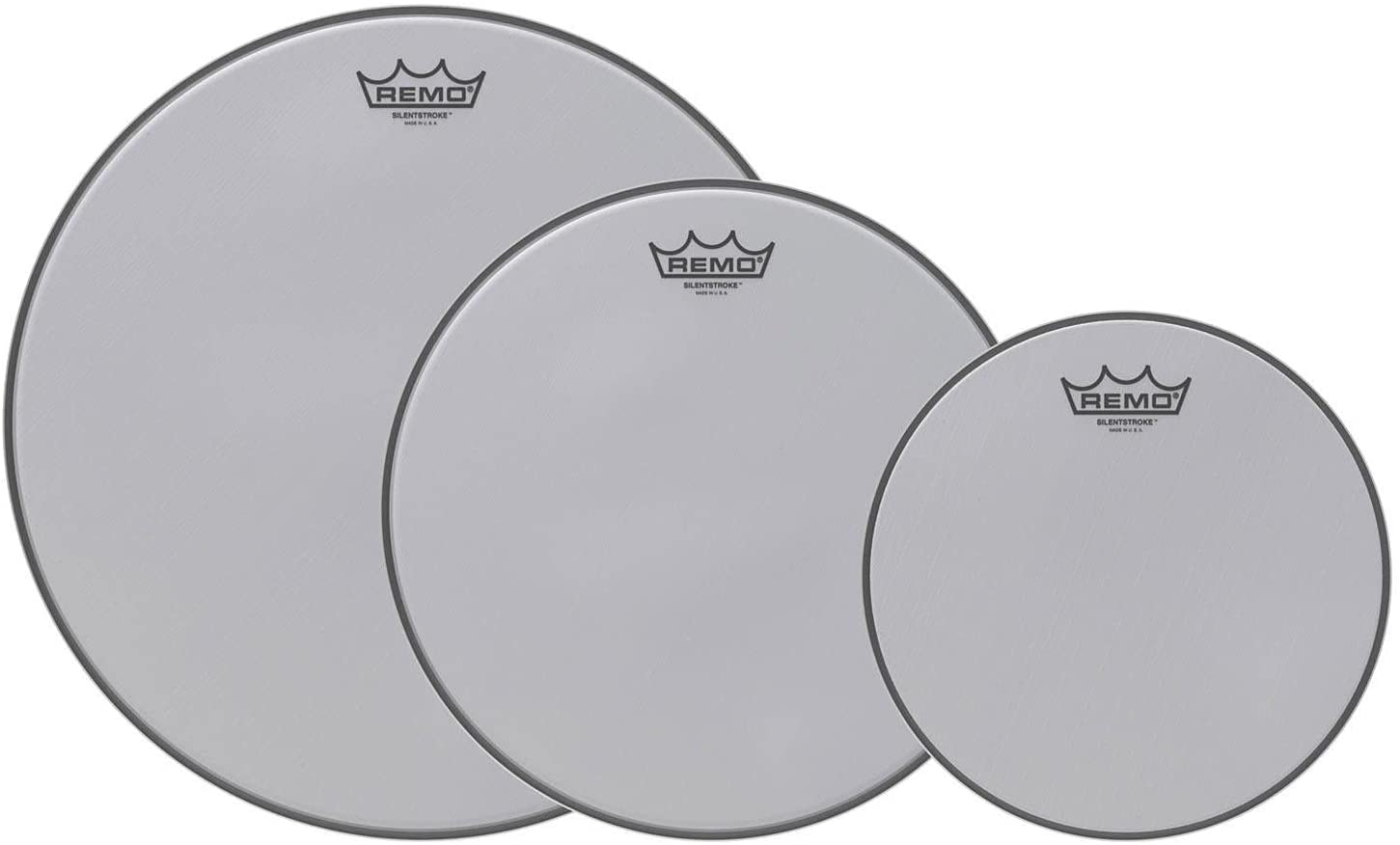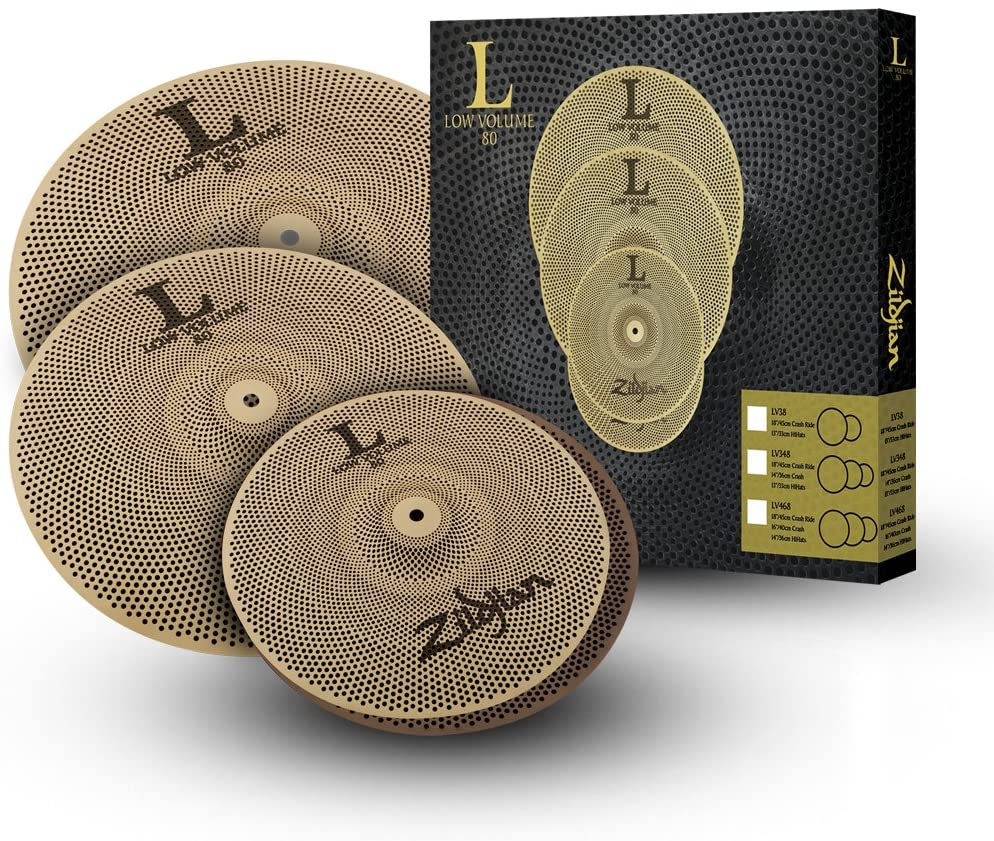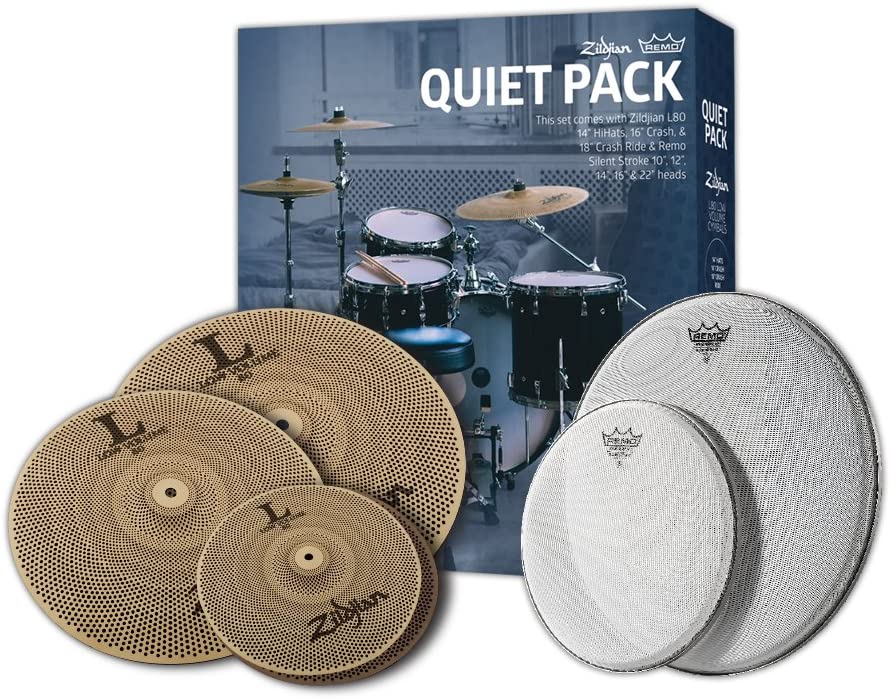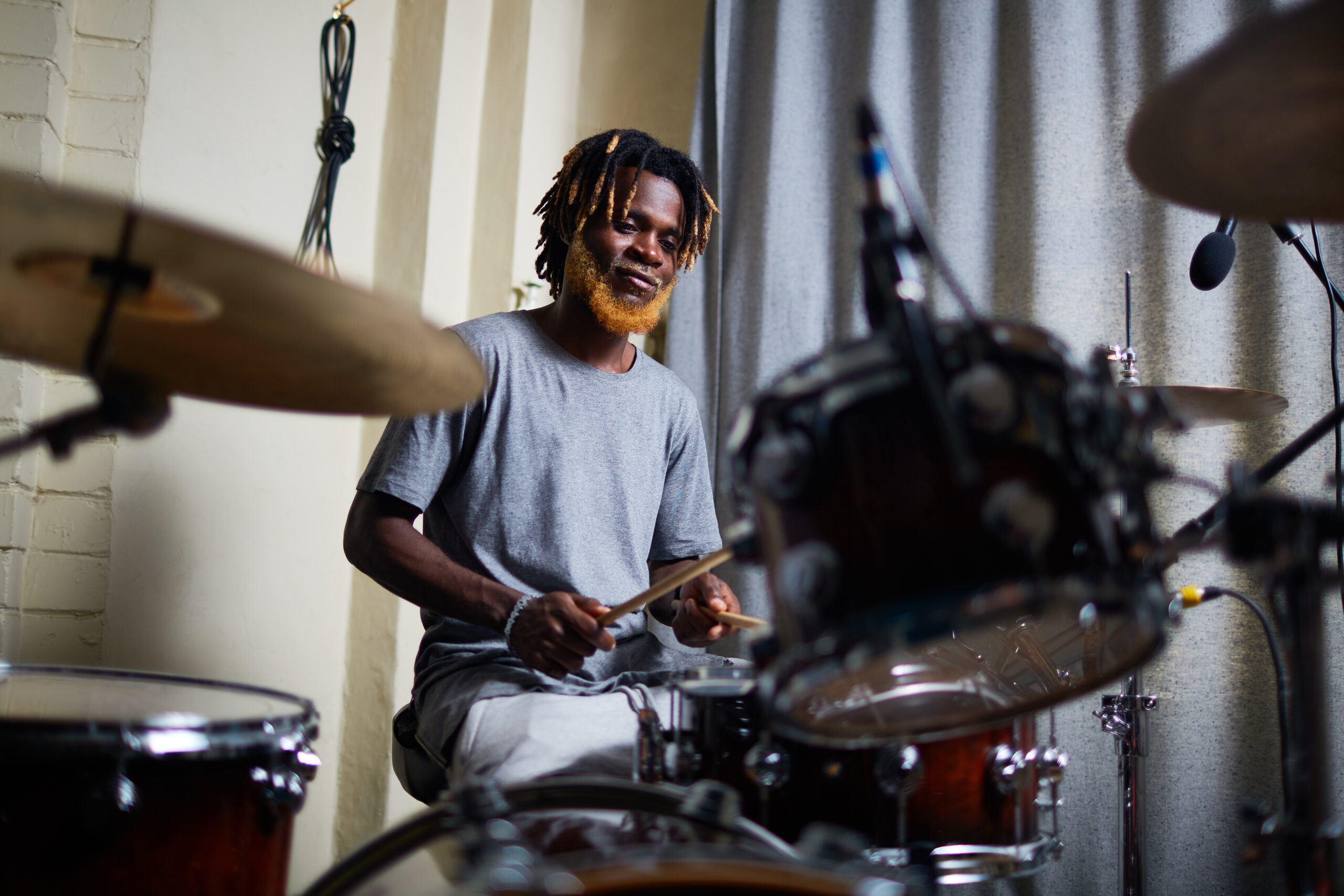One of the most unfortunate aspects of being drummers is that our instrument is incredibly loud. Most drummers don’t have the privilege of playing as loud as possible without any concern for the space around them.
If you live in a suburban neighborhood, you may be wondering what you can do to cut back on some of your drum kit’s sounds leaking out. I’ve been reprimanded a few times over my drumming career for practicing too loudly. It’s an awful feeling to have afterward.
So, I’m going to help you figure out how you can eliminate some of the noise and practice without bothering people. We’re going to look at both soundproofing and sound absorbing. Both methods will help us get to the goal of keeping the peace.
Bottom Line Upfront: The only way to completely soundproof a room is to build a room within a room that has no windows or open doorways. To do this, you need to either build extremely thick walls, or you can put up drywalling and seal the space between the drywalling and your main wall.
An easier way of eliminating sound is treating your room to cut down on harsh frequencies. You can do this by using carpets, sealing gaps, and hanging soundproof panels on the walls. This won’t work as well as building a room within a room, though.
Soundproofing vs Sound Insulating
Before we get into the logistics of cutting down on the sound from your drums, it’s vital that you know the difference between soundproofing and sound absorption. Drummers often mix the two in with each other and end up with a result that isn’t satisfactory.
Soundproofing is when you aim to completely block out the sound coming out of a room. Achieving this is difficult and typically quite expensive. When you go into professional recording studios, you’ll see that their studio walls are several times thicker than standard walls, and that’s the main cause of their soundproofed space.
Sound absorbing is when you insulate the sound in the room. When you have a room with no furniture or objects in it, you’ll hear echoes and reverberation. Insulating the room means that you’re cutting the echoes out, eliminating the reverb, and getting the truest sound possible within the room. You’re blocking the sound from bouncing off the walls too much.
It’s cheaper to insulate the room than it is to soundproof it, so that’s where we’re going to start. I’ve found that insulating your drum room is often enough to stop your neighbors from complaining as the sound coming out is a lot more pleasant.
Choosing Your Drum Room
Choosing an appropriate room is the first step to take when thinking about eliminating as much sound as possible. If you have your drums in the garage, the echo in that space will be off the charts. Garages typically have no natural sound insulation, making them the worst spot to put a drum kit.
I recommend putting your kit somewhere in the house. Your house has thicker walls and is typically further away from neighbors than a garage would be. So, the house is a better option.
If you’re able to put the kit in a room, that’s where it should go. A room has a door that will block a bit of sound when it’s closed. Just make sure to choose a room that isn’t too close to your neighbors.
When I was young, my bedroom was right next door to the neighbor’s property. I decided to play drums at 6 PM once, and the neighbor lashed out so angrily that I stopped drumming for months. While that experience scarred me, it also taught me not to play drums at inconsiderable times and to place the drums as far away from the neighbors as possible.
The most ideal place to put drums is in a basement. The higher they are, the more the sound is going to escape and drop down to areas around you. Having the drums in a basement will also stop a few of the unwanted from escaping.
Tips for Sound Insulating
Carpets
My first suggestion for anyone who plays drums is to put them on a carpet. Even if you’re not looking to cut down on sound, a carpet is where your drum kit belongs. Putting the bass drum on a carpet brings out a much better tone. It also stops the bass drum from moving forward as you kick it.
If you have your kit in a room that is tiled or has wooden floors, I highly recommend getting a large carpet to cover it. Once a carpet is down, you can get a dedicated drum mat from a drum brand and place the kit on there. That extra mat will further aid in insulating the sound of the kit a bit.
When I moved into my latest drum room, I placed those colorful puzzle foam pieces that children play on all around the base of the room. I laid a rug over them, and it made a huge difference to the sound in the room. It was an affordable way of insulating the sound, and no one can see those colorful puzzle pieces as a rug is covering them.
Thick Curtains
The next step in sound insulation is to hang heavy curtains in the room. If you’re using lightweight curtains, the sound from your drums will shoot right through them with ease. The heavier your curtains are, the more sound they’re going to block.
They won’t completely soundproof the space, but they’ll make a big difference. The great thing about curtains is that there are so many options out there that you can choose some that will set the mood of your drum room.
I love having black objects and furniture in my drum space, so I’d get thick black curtains to hang by the windows.
These curtains will stop a lot of the drum sound from getting to the windows, so make sure that they’re closed when you’re playing drums. If you need light in the room, you’ll have to turn on the ceiling lights or even better, get some LED panel lights.
Weatherstripping
The biggest contributor to sound escaping a room is through all the holes around it. When I first learned about soundproofing and sound treating, I never realized just how many escape zones there were for the sound to travel.
If you want to block as much sound as possible from escaping, you need to seal all the gaps. These are mostly found around your doors and windows. The best way to block these gaps is to use weatherstripping.
You need to stick the weatherstripping around the frame of the door and windows so that they’re completely sealed when closed. The best way to test if this worked is to turn a light on in the room and then close the door. If you can see the light from the other side of the door, there are still gaps that haven’t been sealed yet.
Standard weatherstripping won’t work for the bottom of a door, so you’ll need to get a dedicated door stopper for that.
Sound Panels
Once you’ve sealed all the gaps and put carpets on the floor, it’s time to bring out the big guns. You could potentially stop here if you feel that you’ve done enough insulation for the room. However, sound panels are going to make a significant difference to the acoustics inside the room.
Up to this point, you’ve stopped the sound from escaping as best you can, but it will stick in the room and bounce off the walls. This is what causes lots of echo and reverb. Sound panels are the large rectangular structures that you see people hang on their walls, and they act as massive sound insulating tools.
The more sound panels you get, the more efficient they’ll be. However, getting too many will be overkill. There’s a sweet spot when it comes to the number of them, and you need to figure it out.
Sound panels like these end up being quite expensive when you buy many of them. So, many drummers end up making their own. If you’re savvy with DIY projects, go for it! I’m the worst with things like that, so I opted to buy sound panels for my drum room.
Bass Traps
Not all sound panels are the same. You get thicker ones that attach to corners of rooms, and they’re called bass traps. Bass traps absorb low frequencies, and these are essential for drum kits as the bass drum is one of your loudest sound sources.
They get placed in corners as that’s where lower frequencies build up the most. Ideally, it would help to have four bass traps placed around all your corners. However, I’ve found that even placing one makes a significant difference to the sound in the room.
Bass traps tend to be more expensive than standard sound panels as they’re thicker and heavier.
Acoustic Foam
The final things that you could place on your walls would be pieces of acoustic foam. It will do the final touches of sound insulation. Since pieces of acoustic foam aren’t big, they won’t do much in stopping sound from getting to your neighbors.
However, they’ll make the sound more pleasant inside the room, and the noise your neighbors hear will be more pleasant as well.
The sound panels and bass traps will have sound minimization as a byproduct. While they’re not intended for complete soundproofing, having your room professionally treated will naturally decrease the amount of sound from your drum kit that will escape the room.
Acoustic foam is a lot cheaper than sound panels. I know some drummers who choose to place dozens of pieces around their room, rather than hanging the big panels. It works similarly if you have enough of them.
Moving Blankets
My final suggestion for treating your room is to use moving blankets. I’d suggest doing this as a final resort as it doesn’t look incredibly pleasing. The method here is to get industrial moving blankets that have grommets and hang them all around your room.
This method is extremely effective, and I know some drummers who swear by it. If you’re not fazed by how it looks, you should give it a go. Since the blankets are so thick, they do an excellent job of stopping sound from escaping the room.
You’d need to hang them all around the room for this to work the best. It’s going to get quite hot with these around, so you’ll need a fan to cool you down.
I steered clear of this method as I make drum videos regularly. Having blankets stuck on the walls isn’t my idea of an aesthetic backdrop. It may be yours, though!
How to Soundproof a Room Properly
Room within a Room
Building a room within a room is the only way of completely soundproofing your drum room. Most drummers aren’t prepared to do this, so the above methods of insulating should be your first point of call.
If you are prepared to do this, you’ll need to spend a lot of money and have the know-how of construction. Otherwise, you could hire someone to do it for you. That would be my move!
The cheapest way of doing this is to use drywall. You can create a thick wall by using drywall and fiberglass. You could then fill that wall with insulating foam. You’d then need to attach that wall to your current wall and potentially seal the gap with even more foam. This would need to be repeated on all the walls. The goal would be to make a room with no windows or doors, and that would be the room inside your current room.
This isn’t something I’d recommend doing as a loose experiment. If you want to completely soundproof your room, do as much research as possible and be very meticulous in the process. Otherwise, you’ll end up wasting money on building materials that won’t work as they should.
Alternative Solutions
Quiet Cymbals and Drumheads
If your acoustic drum kit is too loud even with all the sound insulating methods, or if you don’t have access to these methods, you could use quiet cymbals and drumheads.
Companies make mesh drumheads that you can place on your standard acoustic kit. They’re about 80% softer than regular drumheads, but they feel very similar and maintain a bit of tone. It’s a lot better than only playing on practice pads. The most popular quiet drumheads are the Remo Silentrokes.
You also get quiet cymbals that are a lot softer than standard cymbals. They have dozens of holes in them that cause the cymbals not to resonate as much. You can play them incredibly hard, and someone in the next room may not hear them. The most popular quiet cymbals are the Zildjian L80s.
There are other options to choose from, but those would be my top recommendation. Zildjian and Remo even came together to offer both as a complete package.
Using quiet drumheads and cymbals isn’t as ideal as playing on your standard kit, but they’re still incredibly useful. I use them on a smaller kit to teach Zoom lessons with. This allows me to teach at all times of the day without bothering my neighbors or my wife in another room.
Electronic Drums
The easiest and cheapest solution to avoid sound complaints is to get an electronic drum kit. These kits were designed with the exact purpose of staying out of the way of people around you. While they used to be expensive, you can easily find affordable ones nowadays, especially from brands such as Alesis.
However, you’d need to get an expensive e-kit if you want it to sound or feel anywhere close to what an acoustic kit sounds or feels like. Roland is generally the best brand to go with for that. Their electronic kits cost considerably more than Alesis kits, though.
If you’re living in an apartment, an electronic kit may still be too loud for your neighbors. If that’s the case, you’d need to follow the above methods of sound absorption to stop the sound from getting through.
You could also place the kit on a platform as the kicking of the bass drum is typically what bothers most people in apartment buildings.
If you’re looking to buy an electronic drum kit, you should check out all our reviews here on Drumming Fanatics. We have several that aim to help new drum kit buyers. Here are a few good ones to read:
- Alesis Nitro Mesh Kit Review: Your Complete Guide to the World of Mesh
- Alesis Nitro vs Surge Compared – What’s the Difference?
- The Best Roland Drum Sets – A Guide to Choosing the Perfect Electronic Kit
Renting a Practice Space Elsewhere
After all your hard work in making the drum sounds as minimal as possible, you may still have neighbors that aren’t happy. If that’s the case, you’re going to have to find somewhere else to play drums that won’t bother anyone. This is also the case if you live in an apartment, and you want to play acoustic drums.
Depending on where you live, you may be able to find a space that you can rent to practice. I used to have my drums living in a friend’s studio. I paid him monthly so that I could go in there to record once a week. It worked out really well.
I know drummers who rent storage units and play drums in there. Storage units generally don’t have any sound restrictions, making them the perfect spots for drummers to use. You’d need to treat the room, though, as the acoustics will start out being quite bad. You can simply use the methods I’ve mentioned above for that.
Renting a place to play drums isn’t ideal, but it’s sometimes the only option. I found that making my friend’s studio feel like my spot as well was the best way of accepting the fact that I needed to drive somewhere else to play my drum kit.
Tips to Make Friends with Your Neighbors
As I’ve gotten older, I realized that making friends with your neighbors is the best way of getting on their good side. Once you’ve built a bit of a relationship with them, they’ll most likely be more open to accepting your hobbies, no matter how loud they are.
With that being said, here are some tips for getting on the good side of the people around you:
Establish Set Times
If you establish a set time to play drums every day, your neighbors will know exactly when to expect it. More importantly, they’ll know exactly when the drumming will end. I’ve found that the main gripe that people have with loud noises is that they can’t see the end in sight, adding to the frustration.
Having your neighbors know your practice schedule will allow them to plan around it. They could use that time to go shopping or walk their dogs. They could also ask you to alter it on a certain day if they have something important happening.
Always Close Your Doors and Windows
This is probably my most important tip. It may seem obvious, but the difference a closed door makes is massive. Whenever you’re playing drums, make sure to close all the doors and windows in your house. This will stop the sound from escaping, keeping your neighbors happy.
At one stage in my life, I had a broken window in my bedroom. I decided to play drums anyway, and that’s when my neighbor flipped. With the open window near his kitchen, it was as if I were playing drums inside his house. Fixing that window up afterward is what made him less frustrated with my drumming.
Don’t Play on Weekends
Only playing on weekdays may not be possible for everyone, but it’s helped me dramatically when it comes to keeping the peace with my neighbors. I try as much as possible to only play drums during work hours. Thankfully for me, drumming is work. How amazing! But it also means that no one is around when I play.
People are typically home during weekends, so they’re more likely to get frustrated by your drumming. This is especially true if you play for hours on end.
You should also try to avoid playing after 6 PM. No one wants to hear drums at night, not even me.
Get Your Neighbors Involved
A few years ago, I gave an invitation to my neighbors to come test the drums out themselves. A few of them loved it as they’d never played drums before. It gave them a new appreciation for the instrument, and they were a lot more relaxed about it when I played.
I also offered the same opportunity to their children, which swayed them even more to my side. If you can do something like this, I highly suggest you do it as getting your neighbors involved will allow them to understand what you’re doing. Even if they just do it once, the effect it has will last years.
FAQs
Answer: Soundproof panels are expensive because soundproofing companies get the best materials possible to achieve a certain goal. However, you can make sound panels yourself that will do the same thing, and you’ll find that you can make them for cheaper.
However, your homemade sound panels may not look as attractive as ones that were professionally made. There are pros and cons to both.
Personally, I’d choose the more expensive professionally made ones for their aesthetics. I make a lot of drum videos, so I want my space to look professional.
Answer: There are certain spaces in a room where sound bounces and causes harsher frequencies than in other spaces. This differs according to the size and layout of the room. You’d need to do a bit of A/B testing to see where the sound panel would be most effective.
You could also seek advice from a professional. I have a friend who did this for me. I sent him the specs of my room with pictures, and he advised me on where to hang my panels.
One space that will be a constant is each corner of the room. That is where you can hang bass traps.
Answer: Muffling drums is the quickest way to make them a bit quieter. If a drum has a lot of sustain, it will ring longer and make it seem louder. If you put some tape over the drumhead, you’ll find that the drum doesn’t ring as long.
Another way is to train yourself to play softer. The softer you hit the drums, the quieter they will sound. This isn’t easy and it requires a lot of restraint. So, it’s something that needs to be practiced.
Answer: No. Acoustic drums are way too loud to be played in areas that have shared walls with other people. Even if you do your best to soundproof the space, your neighbors aren’t going to be impressed.
Unfortunately, people who live in apartments need to either use electronic drum kits or acoustic kits with silent heads and cymbals.
Conclusion
While soundproofing your drum room can be expensive, getting the desired outcome of a quiet space doesn’t need to be. Putting your kit on a carpet, sealing the gaps at the door and windows, and hanging up some thick curtains will often make enough of a difference to stay on the good side of your neighbors.
If you want to professionally treat your room, you can hang up sound panels, bass traps, and acoustic foam. Remember that these will only reduce echo and reverb while only eliminating a slight amount of sound escaping.
A room within a room should be your goal if you need complete soundproofing.
Good luck on your soundproofing journey. Hopefully, your neighbors will love you when you’re finished!
For more interesting reading on drum gear, check out the following articles:

